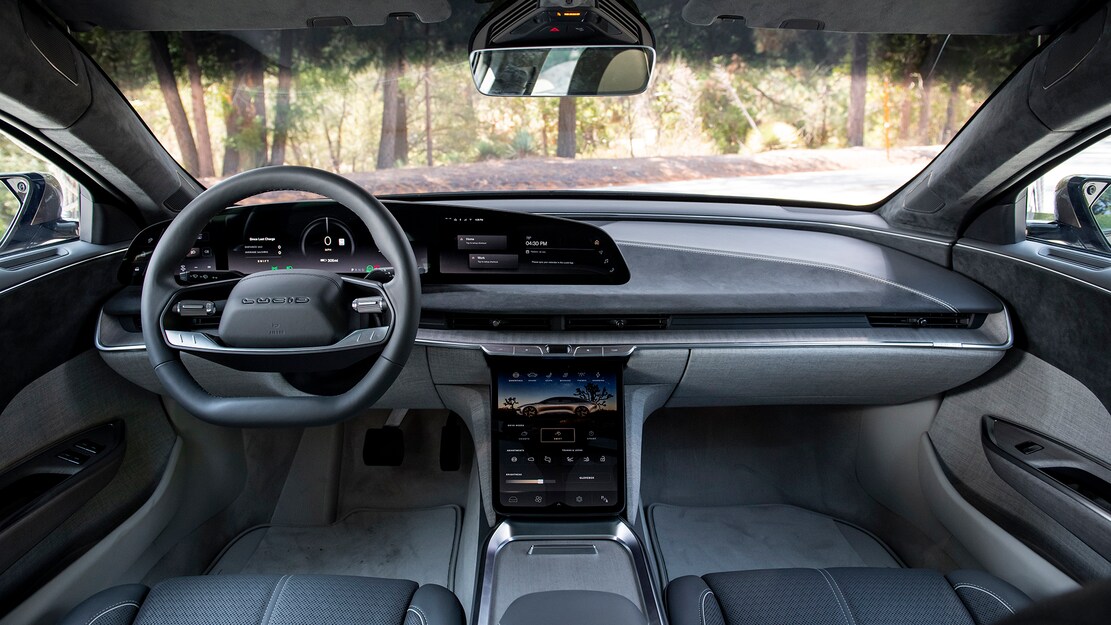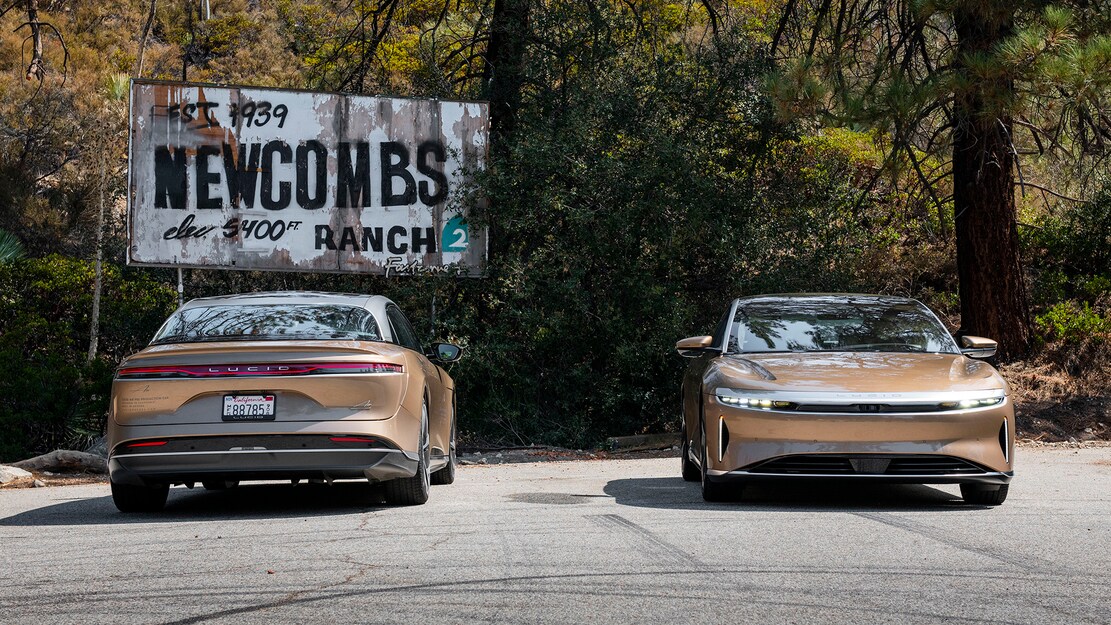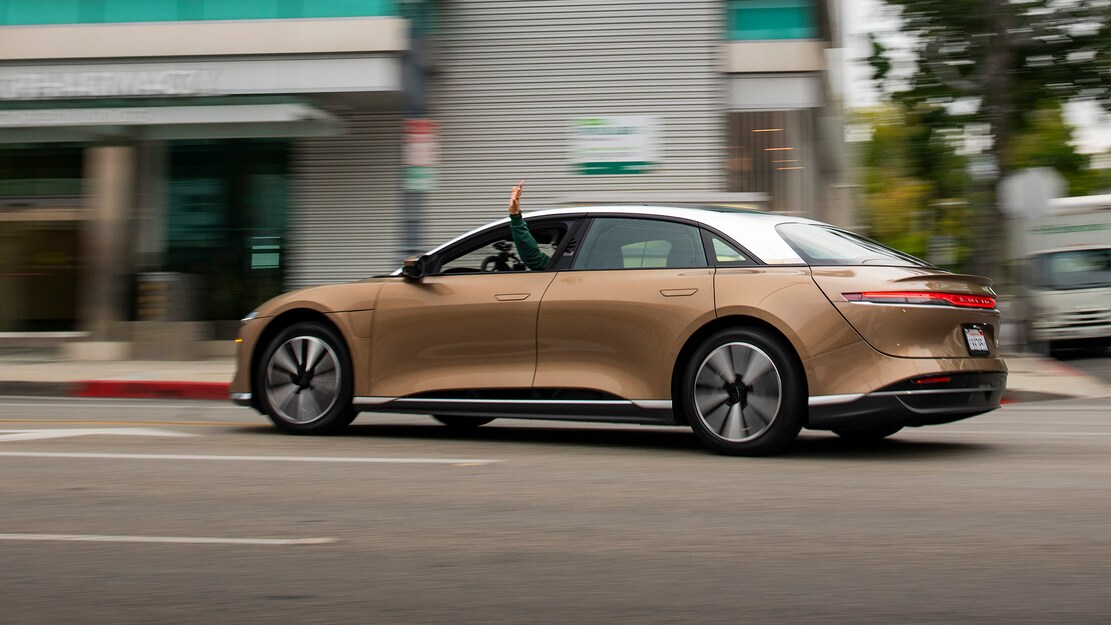

News
The Lucid Air Dream Edition R’s first in-depth review reveals the car is a stunner
Lucid frontman Peter Rawlinson has spent plenty of years in the electric vehicle realm, so he definitely has an idea of what goes into creating a fast, luxurious, and effective electric car. Prior to his time at Lucid, Rawlinson was one of the key members of Tesla’s Model S development team back in the early 2010s, before leaving the company to pursue his own interests, eventually landing at Lucid Motors. As the electric vehicle sector continues to develop quite nicely in the grand scheme of things, with both exclusively electric companies and legacy automakers all contributing to the sustainable energy transition, Lucid is set to deliver its first vehicle, the Air Dream Edition sedan, later this year, and Motortrend got an in-depth and exclusive look at the car that could quite possibly be the king of the hill when it enters the market.
Design
One of the sharpest vehicles in the automotive sector, the Air Dream Edition was outfitted in Eureka Gold for this breakdown by Motortrend. Reminiscent of the Citroën DS redesigned for Blade Runner, the car is simple yet futuristic in its design. It’s a long sedan, and in photographs almost reminds me of an older Ford Taurus in its “boaty” nature. However, it is much more pleasing to the eye, in my opinion. (The Ford Taurus was my second car. I drove it to class in college, and Lord, I hated that thing.)
Credit: MotorTrend
Sleek and luxurious, the reviewers were more particular to this interior than that of the Tesla Model S, stating that “every Tesla since day one has seemingly shipped without a finished interior, Lucid not only crafted a perfectly wonderful luxury-car cabin, but it also smartly avoided the screens über alles aesthetic that plagues cars like the Mercedes EQS.” Truth is, the Air interior is still relatively simplistic, and while it does have a few more bells and whistles than the Tesla Model S, it is not all that different other than an extended instrument cluster, a repositioned center screen, and more material options.
Credit: MotorTrend
Performance
The Air Dream does not drive like a Lotus, which Rawlinson wanted when he designed the car: the look of a Mercedes with the ride of a Lotus. In fact, Jonny Lieberman, who wrote MotorTrend’s review, said it’s more like a Nissan GT-R. It has great handling, and with 933 horsepower, it’s extremely quick. Couple these performance tidbits based on Lieberman’s experience with the already stunning design and comfortable interior, and you have a car that is sure to appeal to many.
Carving turns in the Air was one of the highlights of the test drive. “I assumed the Air Dream Edition R would be decent enough to drive around big sweepers, but about 10 miles into our run up Angeles Crest Highway, I discovered the car enjoyed being manhandled through tight corners,” Lieberman wrote. The harder he drove the car, the better it performed, making it an ideal choice for a scenic joyride through winding and curvy rods, especially with the all-wheel-drive system to help navigate through those corners.
Not only is the car fun to drive, but it’s fast too, even if it’s over 5,000 pounds. Impressive with this pre-production Air model that was available for the test drive, the car will only improve as Lucid begins cranking out production models of the vehicle soon. This is where Lieberman expects Lucid to improve on an already great car. The front end seemed to be a little too free for his liking, while the back tires provided sufficient grip and maneuverability through tight corners. According to Lucid’s Director of Chassis and Vehicle Dynamics David Lickfold, the front spring rate will be reduced by 10% before production begins. The anti-roll bar will be stiffened for more support and stability, and active dampers will get an adjustment, too, providing an even smoother ride than already given.

Credit: Motortrend
Three Drive Modes
The Air will come with three available drive modes, as Lickfold was curious about the condition of the roads that the Air was being tested on by MotorTrend. He suggested Lieberman leave it in Swift Mode, the second option, between Smooth and Sprint.
- Smooth Mode: Motors limited to 670 horsepower, softens dampers and brake pedal feel, the steering wheel is “free” feeling
- Swift Mode: Motors limited to 670 horsepower, much firmer feel than smooth mode, suitable for quicker driving on winding roads, but still holding back some performance
- Sprint Mode: Motors can reach full 933 horsepower potential, dampers are very hard, extremely sporty driving feel with “Tesla Plaid-like battery conditioning” for battery performance
Swift Mode brings out about 75% of the total power output, according to Emad Dlala, Lucid’s Senior Director of Efficiency and Energy Technology.
Credit: MotorTrend
Efficiency, Range, Battery Pack
The Air Dream Edition R is supposed to have 500 miles of range at a minimum, and the EPA will either confirm or deny this when it certifies the car in the coming months. MotorTrend decided to test the range on its own terms with a drive from Los Angeles to San Francisco, close to 350 miles. Not only did this drive provide some insight on how the range of the vehicle would be, but it would also give the reviewers an opportunity to get a look at what the vehicle would be like in its most frequent way of travel: abiding by speed limits and traffic rules during highways, while having to navigate through traffic and provide the driver and passengers with safety, but also entertainment and comfortability through the lengthy quest up the California coast.
It’s a smooth ride, there was wind noise, a common complaint among EVs due to their lack of an engine to drown out road sounds, but tire noise was minimal, Lieberman said. The car sat on Pirelli P Zeros, specifically designed for Lucid. After 205 miles of driving, the range of the vehicle had gone from 503 miles to 286, so there was slightly more energy usage through the 205 miles of driving as 217 miles had been subtracted from the range since the start of the trip. The additional range usage was due to air conditioning, so Lieberman adjusted the temperature from 69 to 71 to see if there was any impact.
The team arrived in San Francisco with 69 miles of range remaining, not needing to charge up at any point during the drive.
Credit: Motortrend
While Lucid still remains very vague in terms of when the Air Dream Edition will begin deliveries, the company still expects them to occur this year. With its unique design, different drive modes, impressive range, fast performance, and sporty but luxury interior, the car is certainly one of the most-anticipated EVs in the last several years. The car, along with Tesla’s vehicles, continues to chip away at the idea that range anxiety is an issue and EVs are not fast and fun. The Air is its own vehicle, and it’s important to not count it out before it hits the road, especially as Lieberman, who has reviewed hundreds of vehicles, was quite impressed by the Air Dream Edition.
Don’t hesitate to contact us with tips! Email us at tips@teslarati.com, or you can email me directly at joey@teslarati.com.

Elon Musk
Starlink passes 9 million active customers just weeks after hitting 8 million
The milestone highlights the accelerating growth of Starlink, which has now been adding over 20,000 new users per day.

SpaceX’s Starlink satellite internet service has continued its rapid global expansion, surpassing 9 million active customers just weeks after crossing the 8 million mark.
The milestone highlights the accelerating growth of Starlink, which has now been adding over 20,000 new users per day.
9 million customers
In a post on X, SpaceX stated that Starlink now serves over 9 million active users across 155 countries, territories, and markets. The company reached 8 million customers in early November, meaning it added roughly 1 million subscribers in under seven weeks, or about 21,275 new users on average per day.
“Starlink is connecting more than 9M active customers with high-speed internet across 155 countries, territories, and many other markets,” Starlink wrote in a post on its official X account. SpaceX President Gwynne Shotwell also celebrated the milestone on X. “A huge thank you to all of our customers and congrats to the Starlink team for such an incredible product,” she wrote.
That growth rate reflects both rising demand for broadband in underserved regions and Starlink’s expanding satellite constellation, which now includes more than 9,000 low-Earth-orbit satellites designed to deliver high-speed, low-latency internet worldwide.
Starlink’s momentum
Starlink’s momentum has been building up. SpaceX reported 4.6 million Starlink customers in December 2024, followed by 7 million by August 2025, and 8 million customers in November. Independent data also suggests Starlink usage is rising sharply, with Cloudflare reporting that global web traffic from Starlink users more than doubled in 2025, as noted in an Insider report.
Starlink’s momentum is increasingly tied to SpaceX’s broader financial outlook. Elon Musk has said the satellite network is “by far” the company’s largest revenue driver, and reports suggest SpaceX may be positioning itself for an initial public offering as soon as next year, with valuations estimated as high as $1.5 trillion. Musk has also suggested in the past that Starlink could have its own IPO in the future.
News
NVIDIA Director of Robotics: Tesla FSD v14 is the first AI to pass the “Physical Turing Test”
After testing FSD v14, Fan stated that his experience with FSD felt magical at first, but it soon started to feel like a routine.

NVIDIA Director of Robotics Jim Fan has praised Tesla’s Full Self-Driving (Supervised) v14 as the first AI to pass what he described as a “Physical Turing Test.”
After testing FSD v14, Fan stated that his experience with FSD felt magical at first, but it soon started to feel like a routine. And just like smartphones today, removing it now would “actively hurt.”
Jim Fan’s hands-on FSD v14 impressions
Fan, a leading researcher in embodied AI who is currently solving Physical AI at NVIDIA and spearheading the company’s Project GR00T initiative, noted that he actually was late to the Tesla game. He was, however, one of the first to try out FSD v14.
“I was very late to own a Tesla but among the earliest to try out FSD v14. It’s perhaps the first time I experience an AI that passes the Physical Turing Test: after a long day at work, you press a button, lay back, and couldn’t tell if a neural net or a human drove you home,” Fan wrote in a post on X.
Fan added: “Despite knowing exactly how robot learning works, I still find it magical watching the steering wheel turn by itself. First it feels surreal, next it becomes routine. Then, like the smartphone, taking it away actively hurts. This is how humanity gets rewired and glued to god-like technologies.”
The Physical Turing Test
The original Turing Test was conceived by Alan Turing in 1950, and it was aimed at determining if a machine could exhibit behavior that is equivalent to or indistinguishable from a human. By focusing on text-based conversations, the original Turing Test set a high bar for natural language processing and machine learning.
This test has been passed by today’s large language models. However, the capability to converse in a humanlike manner is a completely different challenge from performing real-world problem-solving or physical interactions. Thus, Fan introduced the Physical Turing Test, which challenges AI systems to demonstrate intelligence through physical actions.
Based on Fan’s comments, Tesla has demonstrated these intelligent physical actions with FSD v14. Elon Musk agreed with the NVIDIA executive, stating in a post on X that with FSD v14, “you can sense the sentience maturing.” Musk also praised Tesla AI, calling it the best “real-world AI” today.
News
Tesla AI team burns the Christmas midnight oil by releasing FSD v14.2.2.1
The update was released just a day after FSD v14.2.2 started rolling out to customers.

Tesla is burning the midnight oil this Christmas, with the Tesla AI team quietly rolling out Full Self-Driving (Supervised) v14.2.2.1 just a day after FSD v14.2.2 started rolling out to customers.
Tesla owner shares insights on FSD v14.2.2.1
Longtime Tesla owner and FSD tester @BLKMDL3 shared some insights following several drives with FSD v14.2.2.1 in rainy Los Angeles conditions with standing water and faded lane lines. He reported zero steering hesitation or stutter, confident lane changes, and maneuvers executed with precision that evoked the performance of Tesla’s driverless Robotaxis in Austin.
Parking performance impressed, with most spots nailed perfectly, including tight, sharp turns, in single attempts without shaky steering. One minor offset happened only due to another vehicle that was parked over the line, which FSD accommodated by a few extra inches. In rain that typically erases road markings, FSD visualized lanes and turn lines better than humans, positioning itself flawlessly when entering new streets as well.
“Took it up a dark, wet, and twisty canyon road up and down the hill tonight and it went very well as to be expected. Stayed centered in the lane, kept speed well and gives a confidence inspiring steering feel where it handles these curvy roads better than the majority of human drivers,” the Tesla owner wrote in a post on X.
Tesla’s FSD v14.2.2 update
Just a day before FSD v14.2.2.1’s release, Tesla rolled out FSD v14.2.2, which was focused on smoother real-world performance, better obstacle awareness, and precise end-of-trip routing. According to the update’s release notes, FSD v14.2.2 upgrades the vision encoder neural network with higher resolution features, enhancing detection of emergency vehicles, road obstacles, and human gestures.
New Arrival Options also allowed users to select preferred drop-off styles, such as Parking Lot, Street, Driveway, Parking Garage, or Curbside, with the navigation pin automatically adjusting to the ideal spot. Other refinements include pulling over for emergency vehicles, real-time vision-based detours for blocked roads, improved gate and debris handling, and Speed Profiles for customized driving styles.








